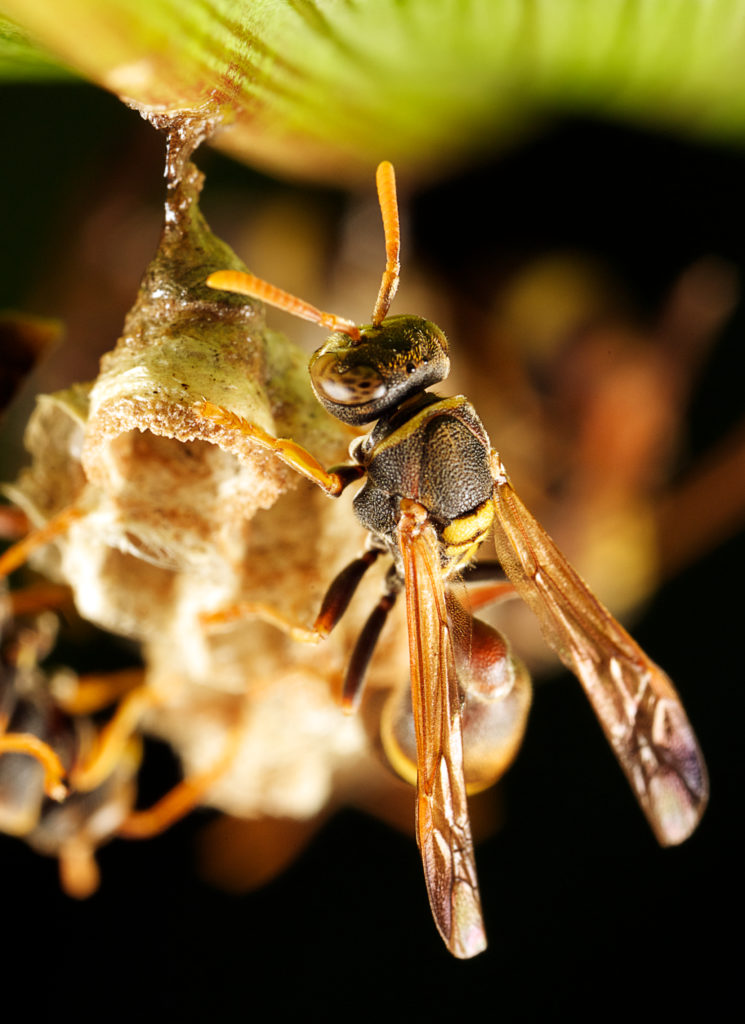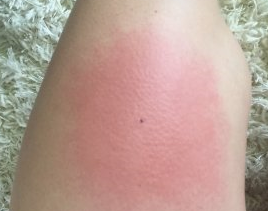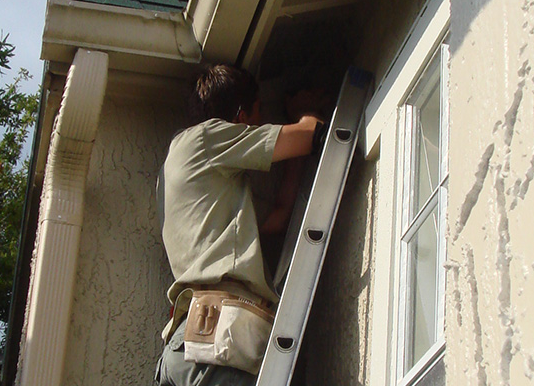A crisp autumn breeze stirs the falling leaves as soft white clouds drift lazily across a clear blue sky. Jack-o’-lanterns and skeletons have disappeared from lawns, replaced by corn stalks, turkeys, and cozy decorations inviting loved ones to gather and give thanks. Family recipes are being dusted off in preparation for Thanksgiving feasts, while those already dreaming of a white Christmas begin stringing lights along rooftops and eaves. Yet, amid the peaceful charm of the season, an unwelcome danger may be hiding nearby—ready to turn joyful holiday decorating into a painful trip to the emergency room: paper wasps. Though less infamous than hornets, their sting delivers a serious sting, and they prefer to build their nests right where you’re about to hang those twinkling lights. Decorating with family and friends should be a cherished moment, but encountering a swarm of irritated wasps while perched on a ladder is anything but festive. So before diving into the most wonderful time of the year, read on to discover what might be lurking on your rooftop (spoiler: it’s not Santa or his reindeer) and how to ensure your holiday season stays safe, bright, and joyful.

What do Paper Wasps Look Like?
Texas is home to several species of paper wasps, each with subtle variations in appearance. Typically measuring between three-quarters of an inch to an inch long, these insects have slender bodies with narrow waists. Their coloring ranges from brown with yellow markings—resembling yellow jackets—to a more uniform reddish-brown hue. They sport smoky black wings and are easily recognized in flight by their distinctive posture, with their long back legs dangling beneath them as they glide through the air.
Why are they called Paper Wasps?
Though most often referred to as paper wasps, these insects have another fitting nickname: umbrella wasps. Both names stem from their distinctive nests—one describing the material they’re made from, the other their unique shape. Paper wasps build their nests using wood fibers scraped from fences, posts, and plant stems, which they chew into a papery pulp. This pulp is shaped into a single layer of downward-facing hexagonal cells, suspended by a thin stalk, creating the look of an upside-down umbrella. Despite being crafted from wood fibers, these nests are remarkably waterproof. The secret lies in the wasps’ saliva, which, when mixed with the fibers, acts as an exceptional waterproofing agent—so effective that it has even been studied as a model for developing synthetic waterproofing materials.

Where do Paper Wasps Live?
A single paper wasp nest typically houses between 20 and 75 adult wasps. These nests are most often found on or near man-made structures such as homes, garages, sheds, porches, or barns, usually in well-protected spots like beneath eaves, decks, or railings, or attached to ceilings, window frames, door frames, or even inside attics. When not built on buildings, they’re commonly seen hanging from shrubs or tree branches. While paper wasps are usually active outdoors, this changes in late fall when fertilized queens search for sheltered places to hibernate through the winter. During this time, you may notice increased wasp activity, especially high above the ground near treetops or towers, as males and reproductive females mate. Once fertilized, the new queens seek refuge in elevated, protected areas such as attics or chimneys—and in doing so, they sometimes find their way indoors, occasionally in small groups, in search of warmth and safety.
What do Paper Wasps Eat?
Although adult paper wasps primarily feed on sugars from sources like ripe fruit, plant nectar, and honeydew (a sweet substance produced by aphids), they are also skilled predators of other insects, including caterpillars, beetle larvae, flies, and spiders. These captured prey are chewed up and fed to the developing larvae, which grow within individual cells over the course of about six weeks. Once mature, each cell is sealed, and the larvae pupate before emerging as adults—either joining the existing colony as non-reproductive female workers or venturing out as reproductive males and females to establish new colonies.

Are Paper Wasps Dangerous?
Paper wasps belong to a small but notable group of stinging wasps that can pose real danger to humans. While thousands of wasp species are capable of stinging, most are either unlikely to attack people or lack venom potent enough to cause serious reactions. Paper wasps, however, are members of the Vespidae family—alongside hornets and yellow jackets—a group of highly social insects known for aggressively defending their colonies. Their stingers serve mainly as defensive weapons, delivering venom made up of more than 30 different compounds, any of which can trigger allergic reactions in humans. A sting from a paper wasp is intensely painful and usually causes localized swelling, but in some cases, it can lead to severe or even fatal reactions. In the United States, insect stings account for roughly 40 to 100 deaths each year, often due to rapid-onset anaphylaxis occurring within minutes. This serious risk underscores the importance of contacting The Bug Dude at the first sign of a wasp problem—allowing trained professionals to handle the infestation safely and protect your family from harm.
Point of Interest: Only female wasps and bees are capable of stinging. This is because the stinger is actually a modified ovipositor—an egg-laying organ that males simply don’t have.

How do you Prevent Paper Wasps?
Although paper wasps rarely reuse the same nest from one year to the next, once they find a successful nesting spot, they tend to return to that location each spring to build new nests. This predictable behavior makes prevention especially important—without it, you could find yourself dealing with repeated infestations year after year.
Because wasps can fly and are small enough to conceal themselves in countless places around your home, it’s impossible to completely prevent them. However, these steps can help make your property less appealing to these unwelcome guests:
- Inspect regularly: Check hidden or sheltered areas—such as eaves, porch ceilings, and rafters—for early signs of nest building. If you find a nest, contact The Bug Dude at 800-310-BUGS (2847) right away to have it safely removed.
- Schedule routine pest control: Maintaining regular service with The Bug Dude helps reduce other insects around your property, limiting food sources for wasp larvae.
- Repair and reinforce problem areas: If a nest appears in or on your home, make the spot less inviting by sealing cracks or openings, repairing window screens, or adding a fresh coat of paint or varnish to deter nest attachment.
- Trim vegetation: Keep bushes, trees, and shrubs near your home neatly trimmed and properly thinned to reduce potential nesting sites.
- Eliminate sugary temptations: Promptly clean up spilled drinks, open soda cans, or fallen fruit that can attract adult wasps.
- Secure garbage bins: Always keep trash cans tightly covered to remove easy food sources.
By following these precautions, you can significantly lower the risk of wasps taking up residence around your home and keep your property safer year-round.
How do you Eliminate Paper Wasps?
Paper wasps are not pests to take lightly. When their nest is threatened, they attack in large numbers—and since each wasp can sting repeatedly, the results can be extremely painful and, in severe cases, even life-threatening. That’s why the technicians at Mid-Cities Pest Control are highly trained in the safe and effective removal of wasp nests. Armed with the proper knowledge, products, and equipment, the professionals at The Bug Dude can swiftly eliminate any wasp problem and help you get back to enjoying your holiday preparations. At the first sign of a wasp issue, call The Bug Dude at 817-354-5350 and let our experts take one worry off your holiday to-do list—leaving you free to focus on that extra helping of turkey.
Further Reading:
“Paper Wasps, Yellowjackets and Solitary Wasps” – Glen C. Moore and Mike E. Merchant, Texas A&M AgriLife Extension
“Paper Wasps” – Eric P. Benson, Extension Entomologist/Associate Professor and Patricia A. Zungoli, Extension Entomologist/ Professor, Department of Entomology, Soils, and Plant Sciences, Clemson University.
“Paper Wasps, Yellowjackets and Other Stinging Wasps” – Hal C. Reed, Richard Grantham, Russell Wright – Oklahoma State University Extension




